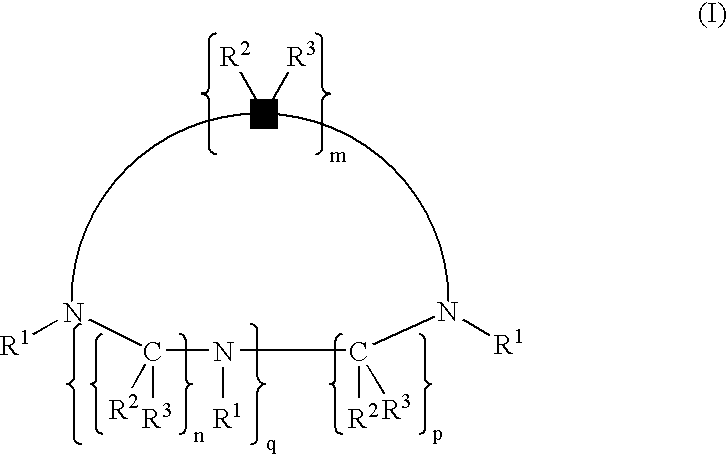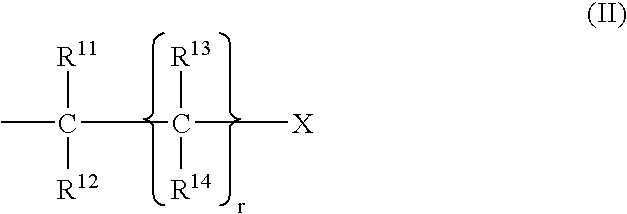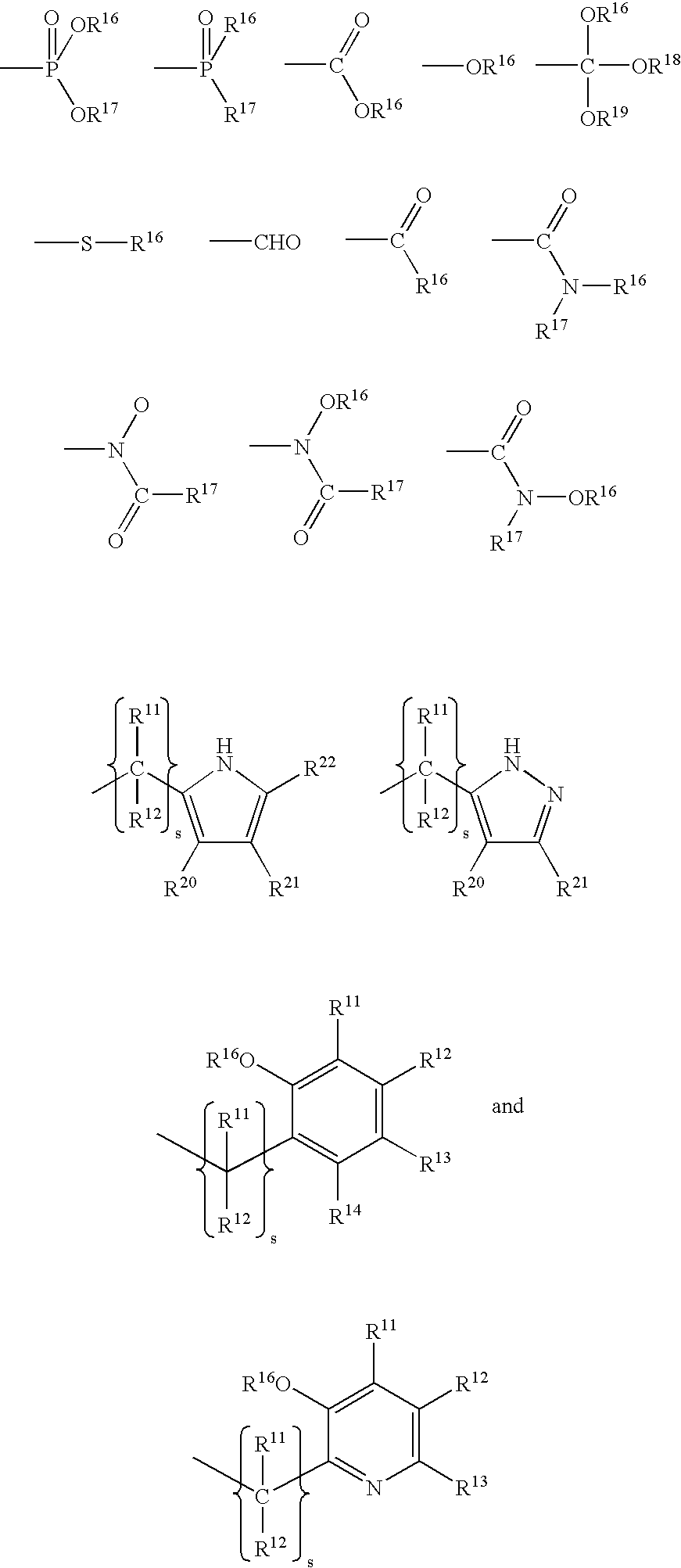Complexes of cyclic polyaza chelators with cations of alkaline earth metals for enhanced biological activity
- Summary
- Abstract
- Description
- Claims
- Application Information
AI Technical Summary
Benefits of technology
Problems solved by technology
Method used
Image
Examples
example 1
[0034] This example illustrates the synthesis of chelators (ligands) which are useful in the present invention. Section 1.1 illustrates the synthesis of polyaza bases. Section 1.2 illustrates the synthesis of alkylating groups. Section 1.3 illustrates the preparation of chelating agents from alkylation of polyaza bases.
[0035] In all examples reactions were carried out in common solvents, compounds were purified by routine methodology and identity was established by proton NMR. In some cases identity was further verified by elemental analysis, mass spectroscopy, C-13 or P-31 NMR, or by synthesis of the identical compound by an independent alternate synthesis route.
1.1 Synthesis of Polyaza Bases
[0036] Ethylene diamine (1.1.0), diethylene triamine (1.1.1), triethylenetetramine (1.1.2), 1,4,7-triazacyclononane (1.1.3), 1,4,7,10-tetraazacyclododecane (1.1.4), 1,4,8,11-tetraazacyclotetradecane (1.1.5), and 1,5,9,13-tetraazacyclohexadecane (1.1.6) and the corresponding hydrohalide salts...
example 2
[0249] This example illustrates the relatively low toxicity of a representative example of the chelators of this invention toward nonproliferating mammalian cells in vitro.
[0250] To mature, nonreplicating cultures of HFF (human foreskin fibroblasts) kept in maintenance media was added N,N′,N″-tris(dihydroxyphosphorylmethyl)-1,4,7-triazacyclononane at a concentration of 0.3 mM. No effect on the resting cells was observed over a five-day period of observation.
example 3
[0251] This example illustrates the low in vivo toxicity of a representative example of the chelators of this invention upon administration to mice.
[0252] Laboratory mice were treated by the intravenous administration of 3.0 mM / kg intravenously of the sodium salt of N,N′,N″-tris(dihydroxyphosphoryl-methyl)-1,4,7-triazacyclononane as a single intravenous dose. Over 50% of the mice thus treated survived for over 14 days following such administration, thus demonstrating that the acute LD50 of this agent is in excess of 3.0 mM / kg. This in vivo LD50 toxicity dose results in an instantaneous in vivo concentration which is orders of magnitude greater than the dose of this agent which inhibits mammalian cell replication in vitro (0.009 mM / L).
PUM
| Property | Measurement | Unit |
|---|---|---|
| Composition | aaaaa | aaaaa |
| Biological properties | aaaaa | aaaaa |
| Affinity | aaaaa | aaaaa |
Abstract
Description
Claims
Application Information
 Login to View More
Login to View More - R&D
- Intellectual Property
- Life Sciences
- Materials
- Tech Scout
- Unparalleled Data Quality
- Higher Quality Content
- 60% Fewer Hallucinations
Browse by: Latest US Patents, China's latest patents, Technical Efficacy Thesaurus, Application Domain, Technology Topic, Popular Technical Reports.
© 2025 PatSnap. All rights reserved.Legal|Privacy policy|Modern Slavery Act Transparency Statement|Sitemap|About US| Contact US: help@patsnap.com



